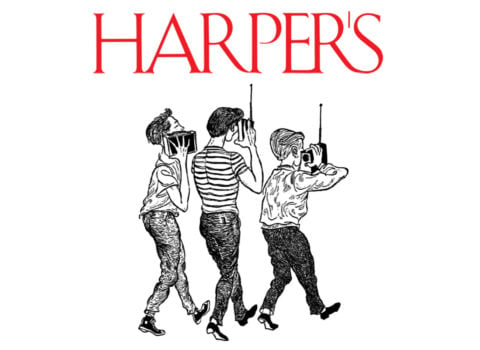In my most recent post, I wrote about Lamed Shapiro (1878–1948), a writer whose work was unknown to me before last week (and remains unknown to Wikipedia). Looking at a passage plucked from early in his story “The Cross,” I observed that Shapiro’s cadences, his syntax and rhythms, might make a reader think of those of later Jewish writers, among them Montreal-born Solomon Bellows (who took the name we came to know him by at age 21) and Manhattan-born Leonard Michaels. What I did not say, much less suggest, was that while those two writers wrote in English, Shapiro wrote his stories in Yiddish.
Shapiro’s work survives, therefore, in translation. That it thrives, though, in the book of stories that appeared last year, The Cross and Other Jewish Stories (Yale, 2007), might be seen as something of a double miracle. It is unusual enough for meritorious foreign work to worm its way into English, but for not one but ten translators to have produced the 200 stylistically congruent pages of The Cross is extraordinary.
Or is it? When discussing translation, conventional wisdom would hold that a single translator offers the consistency that gang translation cannot. When in 2004 Penguin produced a new translation of Proust’s novel In Search of Lost Time, seven translators were drafted to the task. The reception of individual volumes varied, as did the reception of the whole. Yet when I read those new versions I was confronted with the feeling–as much I have found previous English versions more than adequate–that the new translations offered an equally adequate, if different, account of the French original.
The reason, as I argued at the time, that a translation could survive being divvied up between translators who, however editorially trued, would necessarily approach each sentence somewhat differently than their teammates, is that a great writer’s style is not most fundamentally a matter of obvious effects—the rhythmic alliteration, the calculated repetition, the deliberate echo—all those qualities that, rightly, we say are difficult to preserve when trying to pass a book through a keyhole into a foreign reader’s room. Proust himself vouches for such a seeming heresy, offering this definition of style in a 1913 interview:
Style has nothing to do with embellishment, as some people think; it’s not even a matter of technique. Like the color sense in some painters, it’s a quality of vision, the revelation of the particular universe that each of us sees and that no one else sees. The pleasure an artist offers us is to convey another universe to us. (Trans. Roger Shattuck)
This is taking the long way around to say that Shapiro’s writing, though written in Yiddish and translated by ten different sets of hands in the present volume, possesses a clear and consistent style nonetheless. Style in Shapiro may be seen not as a series of conspicuous effects upon which the story succeeds or fails but on a quality of vision—a careful choosing—of the things put before us. What is made clear, as well, through Shapiro’s artistry, is that Proust’s word “pleasure,” when applied to art, takes on a more complicated contour than it typically will in life. For while there is great aesthetic pleasure to be had in Shapiro–in the clarity with which he conveys another universe to us–he is nonetheless offering us a horrible universe, one of endless suffering and degradation, both of the self and of others. For though it begins as a tale of two Jewish hobos making their way across America by train, “The Cross” actually tells the story of a pogrom. “My friend,” the narrator explains,
was still in the river and was making such a ruckus that is seemed like a whole gang of kids were bathing there. Afterwards he got out onto the bank, fresh and gleaming from head to toe. The brown cross on his forehead stood out particularly distinctly. We lay on the sand next to one another for a little while, lay there and kept quiet. I wanted and didn’t want to ask him what sort of mark that was on his forehead. Finally, I posed my question.
He raised his head from the sand and gave me a curious look with a hint of mockery.
—You won’t get scared?
I hadn’t been shocked by anything for years.
—Tell me, I said.
The narrator, who begins as the story’s mouth, soon becomes its ears. In Chaucerian fashion, the prologue ends and the pilgrim takes over, telling of how he came to bear such a mark. That remarkable story, “The Cross,” will appear here in full on Friday, as the Weekend Read.





